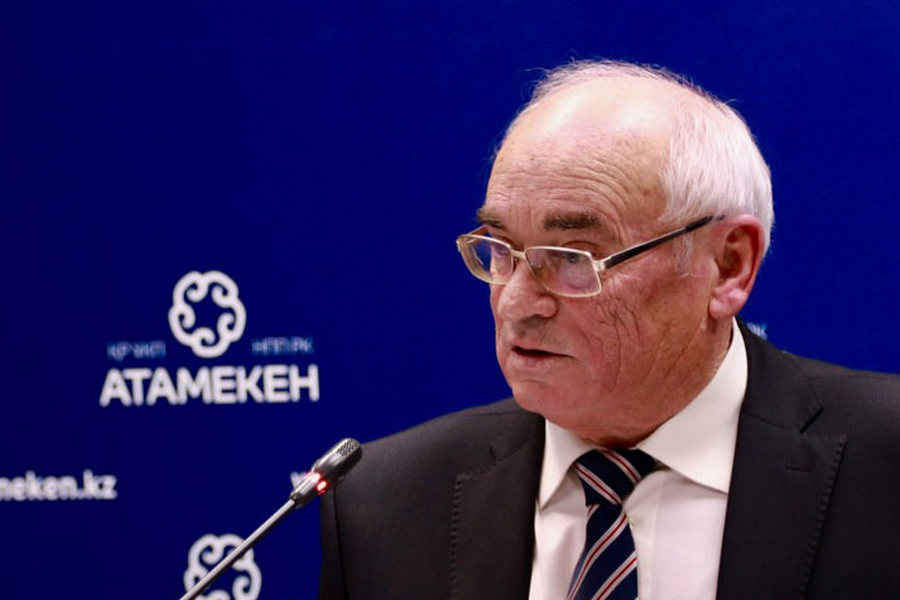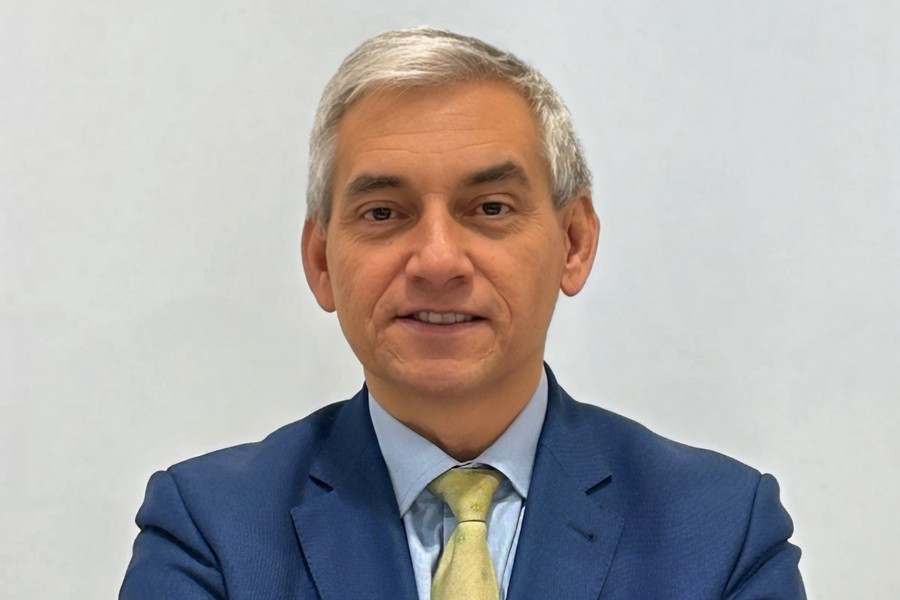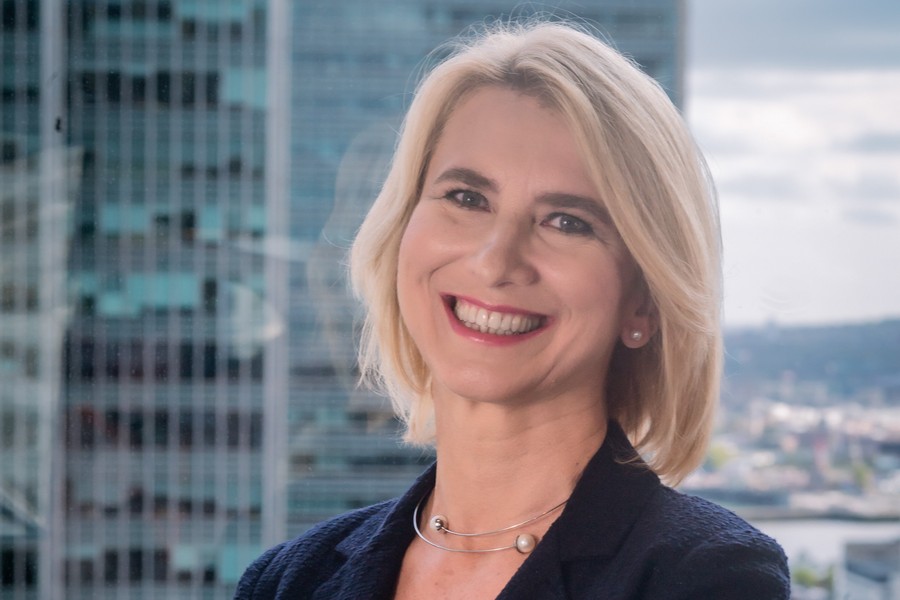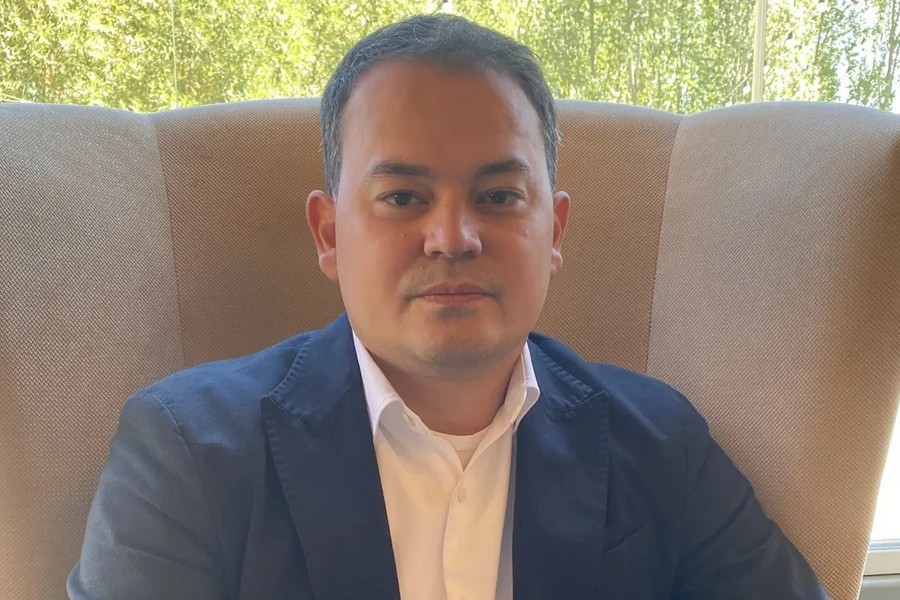Gabdullatif MYRZAKULOV President of National Company Kazakhstan
Garysh Sapary:
KAZAKHSTAN'S FIRST EARTH REMOTE SENSING SATELLITE TO BLAST OFF FROM FRENCH SPACEPORT KOUROU IN 2014

Kazakhstan's space agency Kazkosmos has started building a space center in Astana to design and assemble spacecrafts. In a two-year term the joint venture in cooperation with the French EADS Astrium is scheduled to start manufacturing KazakhstanТs first Earth Remote Sensing Satellite (ERS). The president of National Company Kazakhstan Garysh Sapar (part of Kazkosmos) Gabdullatif Myrzakulov told Interfax-Kazakhstan agency about the ambitious plans of Kazakhstan both on Earth and in space.
- Why the French EADS is chosen as a strategic partner for the Spacecraft Assembly and Test Complex and Earth Remote Sensing Satellite (ERS) projects? Are you satisfied with how the foreign investor is meeting your expectations and providing project financing according to the schedule?
- Kazakhstan has learnt its lesson during the first stage of the national space development program in 2005-2007. If earlier the focus was made on turnkey design and shipment of spacecrafts (namely the telecommunications satellite KazSat-1 and ground control post) now we shift the focus on the transfer of the advanced technologies in spacecraft engineering to Kazakhstan.
To achieve this goal, Kazakhstan has opted for the classic approach: if we want to develop space industry, we need to establish design engineering centers and build a manufacturing and technological base.
Unfortunately, over the past five years, out of five Russia-made telecommunications satellites three revealed serious problems (KazSat-1 among them). The failures haunting the Russian space industry, forced Kazakhstan to seek cooperation with European partners having a reliable and well-tested technologies.
Note:
The KazSat-1 satellite was launched into space from the Baikonur Cosmodrome on June 18, 2006. KazSat was manufactured by the Khrunichev Space Research and Production Center. After its launch Kazakhstan started implementing its own space programs. The country spent $65 million to create its own satellite. On June 8, 2008, the KazSat satellite stopped operating due to a failure in the on-board digital computing system and was not responding to the signals from the control center on the Earth. By late October specialists from Kazakhstan and Russia managed to partially restore the satellite's operating capacity. However, on December 2 the head of the national space agency said that the first Kazakh satellite, KazSat, was ultimately lost.
The launch of Kazakhstan's second national satellite KazSat-2 from the Baikonur Cosmodrome is scheduled for December 2010.
Learning from the previous experience KazKosmos signed an agreement on strategic partnership with Europe's largest and worldТs second largest manufacturer of space systems EADS Astrium in October last year. The agreement provides for the transfer of modern technologies and the creation of the Astana Assembly and Testing Center for manufacturing of spacecrafts. On April 30 the joint venture, in which Astrium holds 27.5%, finalized its registration.
Currently, the joint venture is establishing an executive body called the supervisory board. The authorized capital is going to be formed by October. Meanwhile, the design estimates for the National Space Center and the conceptual design for the Assembly and Testing Center are nearing completion. The contract for the supply of equipment and construction of the assembly complex is also at the final stage. We expect to sign the agreement in the next two or three weeks.
As for the financing, I may say that the maximum aggregate cost of the assembly complex including the equipment, construction costs and maintenance costs are estimated at Euro 131 million. EADS Astrium will cover nearly third of the total project costs. We also have reached an agreement that the French partner will make its contribution to the authorized capital of the JV.
Note:
The agreement for the creation of the Earth Remote Sensing System and for the construction of a spaceship assembly and testing site was signed on October 6, 2009 when French President Nicolas Sarkozy was visiting Kazakhstan.
- Designing and engineering space satellites "from scratch" is a very scientific and capital-intensive project. If Kazakhstan is not facing a funds deficit, the lack of high-qualified specialists in the space industry is obvious. What is your solution to the lack of the engineering personnel?
- I would like to point out that the space center will also house a special design and technology unit, a national laboratory for space technology and facilities for the production of space craft components.
The space center will be equipped with the most advanced testing gear. In particular, a thermal vacuum chamber (TVC) that will allow testing space crafts weighing up to 6 tons, an acoustic test chamber, vibrations stands and a compact ground for satellite testing.
The design and technology unit will become the space centerТs brain. It will conduct its own space design programs as well as adapt French technologies transferred under the working Kazakh-French agreement.
To ensure success of the project, AstriumТs enterprises will prepare 100 high-profile Kazakh specialists including designers, engineers and testers within 3 years. The first 20 trainees are leaving for France in September this year. The design and technology unit will also have its own pilot production geared up with decent equipment to test the domestic technologies.
It means that we are creating a full production cycle from technology designing to its mass production.
- What are the projectТs marketing targets? After all, as far as we can judge, the Assembly and Testing Unit is designed to satisfy not only KazakhstanТs needs. Do you plan to return investments?
- I would like to point out one fundamental detail: the assembly complex has received an adequate amount of orders and long-term funding at its early stage. The JVТs business plan lists all KazakhstanТs satellites for the next few years, including KazSat-3 and KazSat-4 telecommunications satellites and a substitute communications satellite, a medium-resolution earth remote sensing satellite and its space craft substitute in the future as well as Kazakh scientific satellites for space exploration.
In addition, we plan to start the construction of a regional connection satellite for the CIS countries in 2018, which will allow for the efficient use of Central AsiaТs orbital and frequency resources. We hope to develop this idea with our nearest neighbors in the next 6-7 years.
Many of our foreign partners have already expressed their keen interest in the Assembly and Testing complex at its construction stage. Some of them hope to use the complexТs facilities to test their space crafts in the future, some of them can become our potential customers. We can say with certainty that the Arab countries are seriously considering this option.
LetТs not forget that our strategic partner has guaranteed 5 years of annual orders totaling 12 million euros. We are talking about the export production of precision mechanics, cable products and spacecraft wiring.
France will also help Kazakhstan to sell the earth surface shots (taken by the earth remote sensing satellite) through its well-established distribution network. And this is big money: according to our marketing research, oil companies operating in Kazakhstan annually spend up to $80 million on buying such shots from abroad. We do not expect to occupy the whole market, however even 20% would be enough to return the ERS funds in the next 10 years.
Thus, the assembly and testing complex would be loaded with orders for both domestic (66% in monetary terms) and international (34%) markets.
We are confident that the complex will recoup its costs even under the most pessimistic scenario. The projectТs feasibility study has set the payback period at 10 years.
I would also like to note that the complexТs production capacity will total 3 space crafts in 2 years in the first 3-year stage. We expect to reach full capacity by the year 2015.
- What kind of satellites is the assembly and testing complex going to produce? How many components do you expect to produce or is it going to be a Уjust-put-it-togetherФ line?
- The assembly and testing complexТs initial characteristics will allow Kazakhstan producing all types of space crafts: optical, radar (ERS) and telecommunications.
It wonТt be a Уjust-put-it-togetherФ line. The main components will be produced in France (though we are also considering reliable suppliers from other countries) but here in Kazakhstan we will be assembling and testing spacecraft.
Besides, we are planning to gradually increase the Kazakh content in satellites production. Thus, it will start at 10% in 2014 and grow up to 40% by 2020 at the expense of our own products (mainly software). For instance, our Special Design and Technology Unit is currently developing star sensors, GPS sensor, and phased array antennas. So, research work is already underway.
We can boast of some achievements too. For example, the engineers of Kazkosmos have devised ten methods to test the solutions, which were applied when building spacecraft, for compliance with our terms of reference. Such research work allows us to establish cooperation with the foreign investors. Now they know that we are well aware of what we order, what we expect to get in the end and, moreover, we are capable of verifying the quality of the product we ordered.
- The production cycle of Spacecraft Assembly and Test Complex, probably, will not be complete if Kazakhstan itself canТt launch the satellitesЕ Though Kazakhstan owns a spaceport, which is the largest in the world, it does not actually have УaccessФ to the space.
- Kazakhstan will have two options for launching its own satellites. As you may know, Kazakhstan acquired a stake in Russian-Ukrainian joint venture Cosmotrans, which specializes in commercial launches of converted missile RS-20B "Dnepr" that will carry satellites. Kazkosmos intends to increase its holding in the joint venture to 33.3% in the next year and a half.
We hope that in the next 4-5 years Dnepr will bring Kazakhstan spacecrafts into orbit. Our Special Design and Technology Unit will also be able to test its solutions when assembling the satellites at the Spacecraft Assembly and Test Complex.
Besides, our French partners have offered Kazakhstan their Kourou cosmodrome in FranceТs Guiana to launch Kazakh spacecrafts. European launcher Ariane will put our Earth Remote Sensing satellite (ERS) satellite into orbit. Astrium as manufacturer of this spacecraft sets very tough requirements for safety and we have agreed with the proposal of the French side. The satellite is going to be launched in 2014.
Of course, we considered the possibility of having our satellite launched from Baikonur in order to cut the project costs. However, as France and Russia does not have an agreement on security of military satellites, such a launch would be rather problematic.
- By the way, concerning the second joint project with EADS Astrium, which is Earth Remote Sensing system (ERS). What is the status of this project? Has it been somehow affected by the financial crisis?
- The project is being implemented as per the schedule. But it may face shortage of finances next year.
Nevertheless, in late April we made prepayment with respect to the first of the two ERS satellites, a high resolution system. On June 17 we accepted from the French partners the first stage of the project.
Our objective for the near future is to make an advance payment with respect to the second ERS satellite, a medium resolution system. It will be manufactured by SSTL, a UK-based business unit of Astrium. I hope that the work on this satellite will begin in mid-July. However, the progress of the project will depend, of course, on availability of finances.
- Recently the Kazakh parliament ratified an agreement between Kazakhstan and France which grants Astrium export licenses for supply of duel-purpose satellites to Kazakhstan. Does this mean that the Assembly and Test Complex will be used to satisfy the domestic military demands?
- Not exactly. In accordance with this agreement the French government will grant permission to EADS Astrium to manufacture and deliver to Kazakhstan an ERS satellite, which will be making images of the Earth surface with a spatial resolution of 1 meter. ERS systems are classed as dual-purpose satellites.
I should also mention that Kazakhstan is the first CIS country which France will deliver such equipment and transfer the production technology. This demonstrates the high level of confidence between our countries and the strategic partnership in the space industry.
- Thank you for the interview!
July, 2010
й 2009 Interfax-Kazakhstan news agency
July, 2010
© 2025 Interfax-Kazakhstan news agency
Copying and use of these materials without reference to the source is prohibited
Archive





